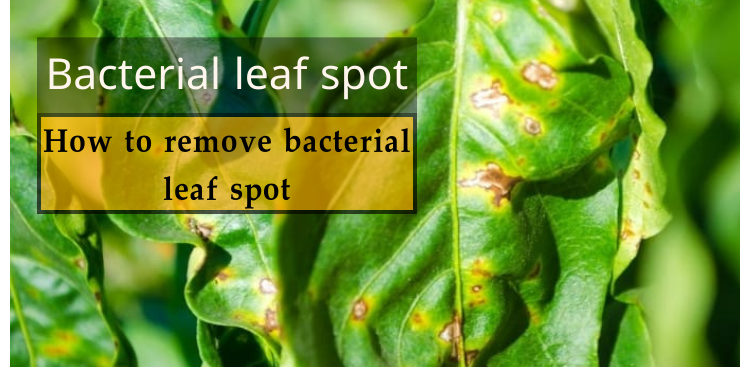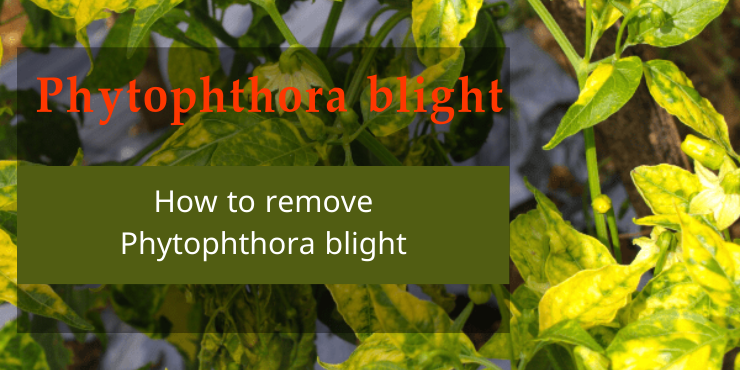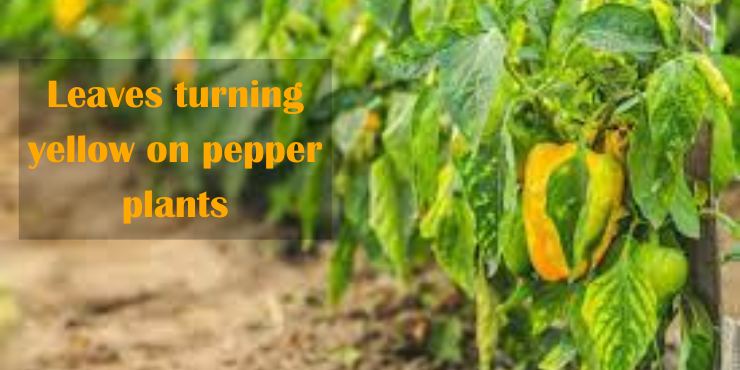Leaves turning yellow on pepper plants and The Allure of Yellow Leaves on Corn Plants are known for their vibrant green foliage, but when the leaves start to turn yellow, it is a clear indication that something is not right. This sudden change in color can be a cause of concern for many gardeners, as it could be a sign of a nutrient deficiency, disease, or even environmental stress. In this article, we will explore the possible causes and remedies for leaves turning yellow on pepper plants, helping you to identify and address the issue effectively. Whether you are an experienced gardener or a novice, understanding the reasons behind this problem is essential for maintaining healthy and productive pepper plants.
Causes of Pepper Leaves Turning Yellow
When the leaves of pepper plants start to turn yellow, it is an indication that there may be underlying issues affecting their health. Several factors can contribute to yellowing leaves in pepper plants, including environmental conditions, pests, diseases, and nutrient deficiencies.
One common cause of yellowing leaves is over or under watering. When pepper plants receive too much or too little water, their leaves may start to turn yellow. Overwatering can lead to root rot and suffocate the roots, preventing the plant from absorbing water and nutrients properly. Underwatering, on the other hand, can lead to drought stress and cause the leaves to wilt and yellow.
What Should Healthy Pepper Plants Look Like?
Healthy pepper plants should have a strong and sturdy stem, with a vibrant and lush green color. The leaves should be uniformly green, without any yellowing or discoloration. The foliage should be dense and abundant, indicating good growth and nutrient absorption.
The plant should also have multiple branches and strong lateral growth, indicating a healthy and vigorous growth pattern. Flower buds and blossoms should be present, as this indicates that the plant is ready to bear fruits. Overall, healthy pepper plants should exhibit a robust and vigorous appearance, showcasing their capability to thrive and produce a bountiful harvest.
Leaves turning yellow on pepper plants
Nutrient Deficiencies
Nutrient Deficiency: Yellowing leaves can be a symptom of nutrient deficiencies, particularly nitrogen, magnesium, or iron. A lack of nitrogen can lead to overall leaf yellowing, while deficiencies in magnesium and iron usually cause yellowing between the veins of the leaves. Soil testing and subsequent fertilization can help address these deficiencies.
Overwatering or Poor Drainage:
Overwatering or Poor Drainage: Too much water can result in root rot and reduce the plant’s ability to absorb nutrients, leading to yellowing leaves. Ensure that your pepper plants are not sitting in waterlogged soil and follow a regular watering schedule that allows the soil to dry slightly between watering.
Underwatering or Drought Stress:
Underwatering or Drought Stress: On the flip side, inadequate watering can also cause yellowing. Make sure your plants receive enough water, especially during hot and dry periods. Deep watering is essential to encourage root development and prevent drought stress.
How to fix watering stress
To fix watering stress and prevent leaves from turning yellow, it is important to ensure proper watering practices. Water the pepper plants deeply but infrequently, allowing the soil to dry out slightly between watering sessions. It is advisable to water in the morning to allow the leaves to dry out during the day.
Pests and Diseases:
Pests and Diseases: Yellowing leaves can be a symptom of various pests and diseases, such as aphids, spider mites, whiteflies, or fungal infections. Inspect your plants regularly for any signs of infestation or disease, and take appropriate measures to treat these issues.
How to fix problems due to pepper diseases
For diseases, it is crucial to identify the specific disease affecting the pepper plants and take appropriate measures. This may involve removing and destroying infected plant material, applying fungicides or bactericides, and practicing good sanitation and crop rotation to prevent the spread of disease.
Environmental Stress:
Environmental Stress: Pepper plants can experience stress from extreme temperatures, particularly cold temperatures or sudden temperature fluctuations. This stress can manifest as yellowing leaves. Provide adequate protection for your plants during temperature extremes and ensure they are planted in a suitable location.
How to fix a environmental stress
First, ensure that your pepper plants are receiving the right amount of sunlight. While peppers require plenty of sunlight, excessive exposure can lead to sunburn and yellowing of leaves. Provide partial shade during the hottest part of the day, or consider moving your plants to a location with less intense sunlight.
Next, check the temperature around your pepper plants. Extreme temperature fluctuations, such as heat waves or cold snaps, can stress the plants and cause yellowing leaves. Consider providing protection, such as shade cloth or row covers, during temperature extremes to maintain a more stable environment for your plants.
Aging or Natural Leaf Drop:
Aging or Natural Leaf Drop: It is normal for pepper plants to shed older, lower leaves as they age. These leaves may turn yellow before dropping off. This process is usually nothing to worry about as long as new growth remains healthy.
How to fix a aging or natural leaf drop
Nutrient deficiencies can also contribute to leaf yellowing. Monitor your plants for signs of deficiencies, such as pale or leaves turning yellow on pepper plants with green veins. If necessary, provide a balanced fertilizer specifically formulated for pepper plants. Follow the instructions on the fertilizer packaging to ensure the proper application and dosage.
Lastly, if pests or diseases are causing the yellowing leaves, it is important to take appropriate measures to control and eliminate these issues. Inspect your plants closely for any signs of pests, such as aphids or mites, and treat with insecticidal soaps or organic pest control methods as necessary. If diseases are suspected, remove affected leaves or consider using a fungicide to prevent further spread.
Calcium Deficiency:
Calcium deficiency can also be a potential cause of yellowing leaves on pepper plants. Calcium is an essential nutrient for plant growth and development, playing a crucial role in cell wall structure and strength. A calcium deficiency can result in weakened cell walls, leading to yellowing and distortion of leaves.
How to fix a Calcium Deficiency
To remedy a calcium deficiency, there are several steps you can take. Firstly, ensure that the soil pH is within the appropriate range of 6.0 to 7.0. This helps with calcium availability to plants. If necessary, adjust the soil pH using agricultural lime or sulfur according to a soil test.
Next, consider applying calcium-rich amendments to the soil, such as gypsum or bone meal. These products slowly release calcium into the soil, providing a steady supply for your pepper plants. Follow the recommended application rates on the packaging.
Magnesium Deficiency:
If the leaves of your pepper plants are turning yellow, it could be a sign of magnesium deficiency. Magnesium is an essential nutrient for plants as it plays a vital role in chlorophyll production and photosynthesis.
When pepper plants lack magnesium, their older leaves may develop yellowing between the leaf veins while the veins themselves remain green. This condition is known as interveinal chlorosis. The yellowing usually starts at the bottom of the plant and progresses upwards as the deficiency worsens.
How to fix a magnesium deficiency
Proper watering practices are also essential for addressing magnesium deficiency. Overwatering or poorly drained soil can exacerbate the problem. Ensure that your plants are receiving adequate but not excessive water. Water deeply and allow the soil to slightly dry out before watering again.
Bacterial leaf spot:
Bacterial leaf spot is a common bacterial disease that affects pepper plants and can cause yellowing of leaves. This disease is caused by several species of bacteria, including Xanthomonas campestris and Pseudomonas syringae, which infect the plant through wounds or natural openings.
The symptoms of bacterial leaf spot start as small, water-soaked spots on the leaves that gradually enlarge and turn yellow. These spots may have a dark, necrotic center and can coalesce to form larger lesions. As the disease progresses, the infected leaves may eventually die and drop from the plant.
How to remove bacterial leaf spot

To remove bacterial leaf spot and prevent its spread, it is essential to take immediate action. Start by removing and destroying any infected leaves or plant debris to prevent the bacteria from spreading to healthy parts of the plant. Make sure to sanitize your hands, tools, and gardening equipment after working with infected plants to avoid transmitting the bacteria to other plants. Practicing good sanitation in the garden is crucial.
Avoid overhead watering, which can spread the bacteria through water droplets. Instead, water at the base of the plant to keep the leaves dry. Proper spacing between plants to improve air circulation can also help reduce the risk of infection. To further control bacterial leaf spot, you can apply copper-based fungicides or bactericides. These products can help suppress the growth of bacteria and protect healthy plant tissue. Follow the instructions on the product label for proper application and frequency.
It’s important to note that prevention is key when it comes to bacterial leaf spot.
Phytophthora blight:
Phytophthora blight is a fungal disease that commonly affects pepper plants and can cause leaves to turn yellow. It is caused by various species of Phytophthora, a group of destructive plant pathogens. The disease spreads through waterborne spores and is often favored by wet and humid conditions.
The symptoms of Phytophthora blight typically start with yellowing and wilting of lower leaves, which can spread to affect the entire plant. Infected leaves may develop brown or black lesions and eventually die. The disease can also affect the stems and fruits, causing rotting and decay.
How to remove Phytophthora blight

To manage Phytophthora blight and prevent further yellowing of pepper leaves, it is important to take prompt action. Begin by removing and destroying any infected plant material, including leaves, stems, and fruits. This helps to eliminate a potential source of spores and reduce the spread of the disease. Improving drainage is crucial in preventing Phytophthora blight.
Make sure that your pepper plants are not sitting in waterlogged or poorly drained soil, as this creates conditions favorable for the fungus to thrive. Consider amending the soil with organic matter, such as compost, to improve its structure and drainage capabilities.
Cucumber mosaic virus:
Cucumber mosaic virus is a plant disease that affects a wide range of crops, including pepper plants. One of the common symptoms of this virus is the yellowing of leaves on pepper plants. Initially, these yellow spots may appear to be random, but as the virus progresses, the entire leaf may turn yellow and show signs of wilting or curling. Cucumber mosaic virus is transmitted through sap-sucking insects, such as aphids, which feed on infected plants and then transfer the virus to healthy ones.
Once a plant is infected, there is no cure for the virus, and it can spread rapidly throughout the crop. In addition to yellowing leaves, pepper plants infected with cucumber mosaic virus may also show stunted growth, reduced fruit production, and mottled or distorted fruits. The severity of the symptoms can vary depending on the pepper plant variety and the strain of the virus.
How to remove Cucumber mosaic virus
To prevent cucumber mosaic virus in pepper plants, it is important to practice good sanitation, such as removing infected plants and controlling weeds that may serve as hosts for the virus.
Additionally, using insecticides to control aphids and other sap-sucking insects can help reduce the spread of the virus. It is also important to purchase certified virus-free seeds or transplants to avoid introducing the virus into the garden. Regularly monitoring pepper plants for signs of yellowing leaves and other symptoms can help catch the virus early and prevent it from spreading to other plants.
Verticillium wilt:
Verticillium wilt is a fungal disease that affects a wide range of plants, including pepper plants. One of the typical symptoms of this disease is the yellowing of leaves on pepper plants. Initially, the yellowing may be limited to random spots or patches on the leaves, but as the disease progresses, the entire leaf may turn yellow and eventually brown.
Verticillium wilt is caused by the soilborne fungus Verticillium dahliae or Verticillium albo-atrum. The fungus infects the roots of the pepper plant and spreads through the vascular system, blocking the flow of water and nutrients. This leads to wilting, yellowing, and eventually the death of affected plant parts.
How to remove Verticillium wilt?
Preventing Verticillium wilt in pepper plants involves practicing good cultural practices, such as crop rotation and soil sterilization, to reduce the presence of the fungus in the soil. Planting resistant varieties can also help minimize the risk of infection. Additionally avoiding overwatering and maintaining proper drainage can help reduce the likelihood of infection, as the fungus thrives in wet conditions.
Too much chlorine
When pepper plants are exposed to excessive levels of chlorine, their leaves can start to turn yellow. Chlorine is often found in tap water, and if the plants are regularly watered with chlorinated water, it can lead to chlorine toxicity. This condition is characterized by the yellowing of leaves, which may begin from the tips and edges and gradually spread throughout the foliage.
Other symptoms may include wilting, browning, or scorching of the leaves. Chlorine toxicity can hinder the plants’ ability to photosynthesize and take up necessary nutrients, resulting in stunted growth and reduced yield. To prevent this issue, it is advisable to water pepper plants with non-chlorinated water, such as rainwater or water that has been treated to remove chlorine.
Final thought:
yellow leaves on pepper plants are a common issue that can have several causes. It is important for gardeners to diagnose the problem accurately in order to provide the appropriate treatment. Factors such as nutrient deficiencies, overwatering, pests, diseases, and environmental stressors can all contribute to the yellowing of leaves. By taking preventative measures such as providing balanced nutrients, proper watering techniques, employing integrated pest management methods, and creating favorable growing conditions, gardeners can help to minimize the occurrence of yellow leaves and promote healthy pepper plants.
FAQs:
Q: Why are the leaves on my pepper plants turning yellow?
Answer: Yellow leaves on pepper plants can be caused by a variety of factors, including nutrient deficiencies, overwatering, pests, diseases, and environmental stressors.
Q: How can I tell if my pepper plant has a nutrient deficiency?
Answer: Nutrient deficiencies in pepper plants can be identified by specific symptoms exhibited by the leaves. For example, yellowing between veins may indicate a nitrogen deficiency, while yellowing of older leaves may suggest a potassium deficiency. Conducting a soil test can help determine if any specific nutrients are lacking.
Q: What can I do to correct a nutrient deficiency in my pepper plants?
Answer: Correcting nutrient deficiencies can involve several steps. First, identify the specific nutrient that is deficient and provide the appropriate fertilizer or supplement. It is important to follow label instructions and not over-fertilize, as this can cause other issues. Additionally, ensuring the soil pH is within the appropriate range for nutrient uptake can also enhance nutrient availability for the plants.
Q: Could overwatering be causing yellow leaves on my pepper plants?
Answer : Yes, overwatering can lead to yellow leaves on pepper plants. Waterlogged soil restricts oxygen availability to the roots and can cause root rot, nutrient imbalances, and yellowing of the leaves. It is important to provide proper drainage and water the plants only when the top inch or two of soil is dry.
Q: How can I prevent pests from causing yellow leaves on my pepper plants?
Answer: Preventing pest infestations involves several measures. Firstly, maintain a clean garden by removing any debris or fallen leaves that may attract pests. Monitor the plants regularly for signs of pests such as aphids, mites, or caterpillars and take immediate action if an infestation is detected. Using natural predators, like ladybugs, or employing organic pest control methods can also help deter pests.
Q: Can diseases cause yellow leaves on pepper plants?
Answer: Yes, diseases such as fungal infections or viral diseases can cause yellow leaves on pepper plants. Common diseases that can lead to yellowing leaves include powdery mildew, bacterial spot, or tomato spotted wilt virus. Proper plant spacing, good air circulation, and regular inspection for early signs of disease can help prevent or manage these issues.

Pingback: Bird of paradise leaves curling- Causes and Solutions for Curling - Quotes Tutor